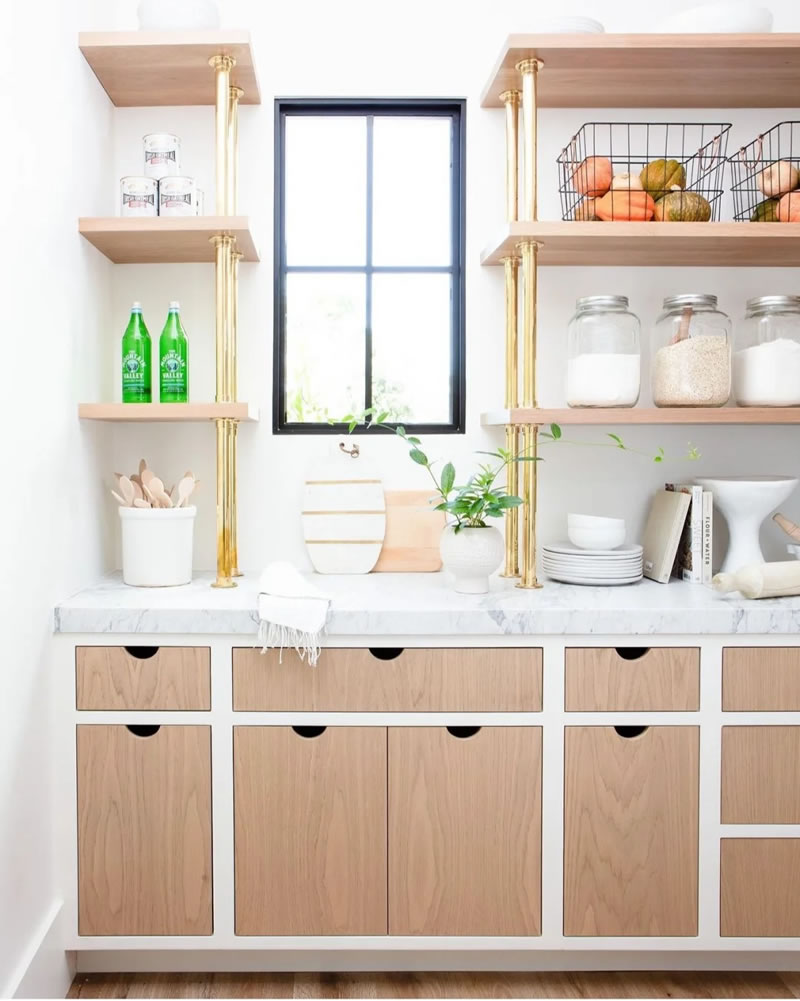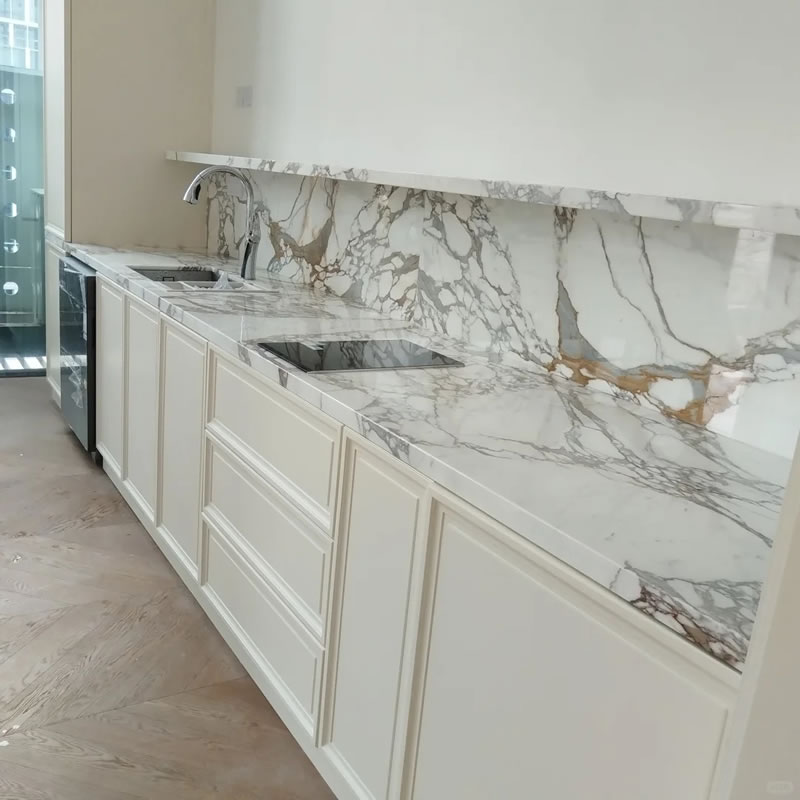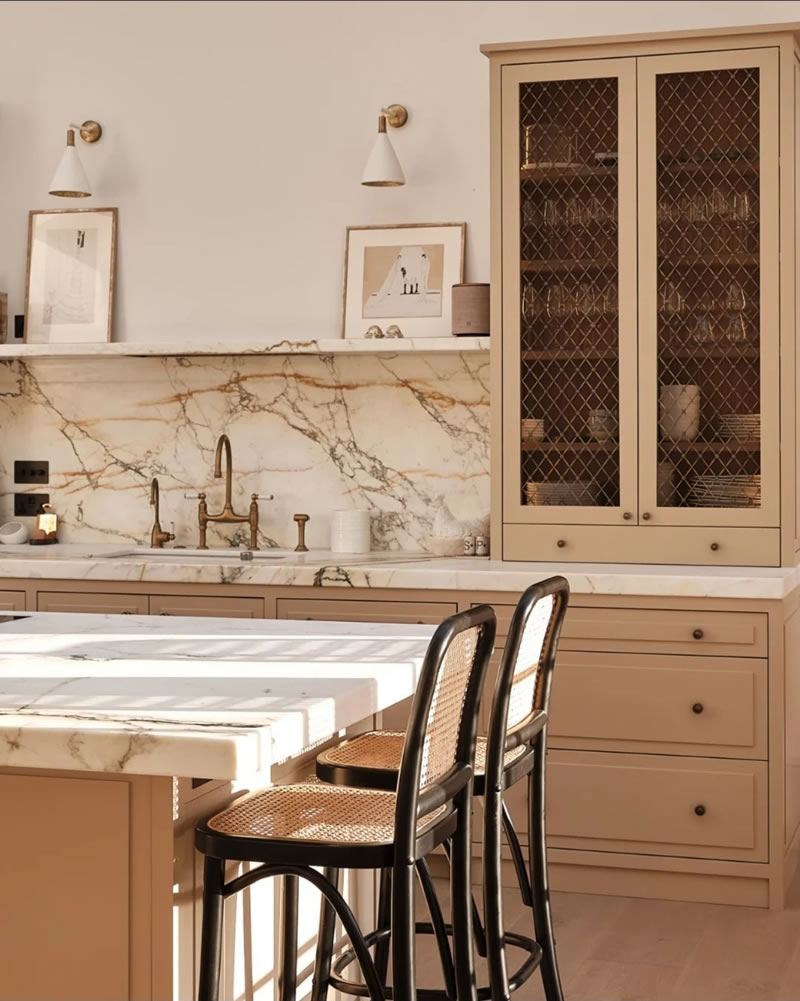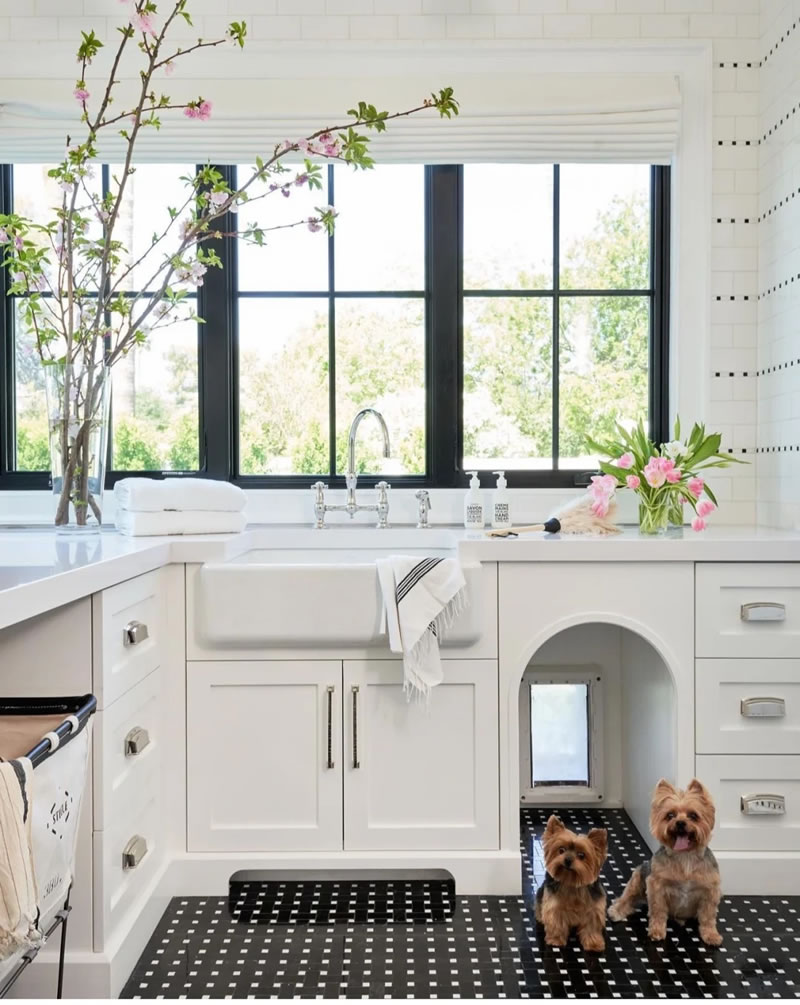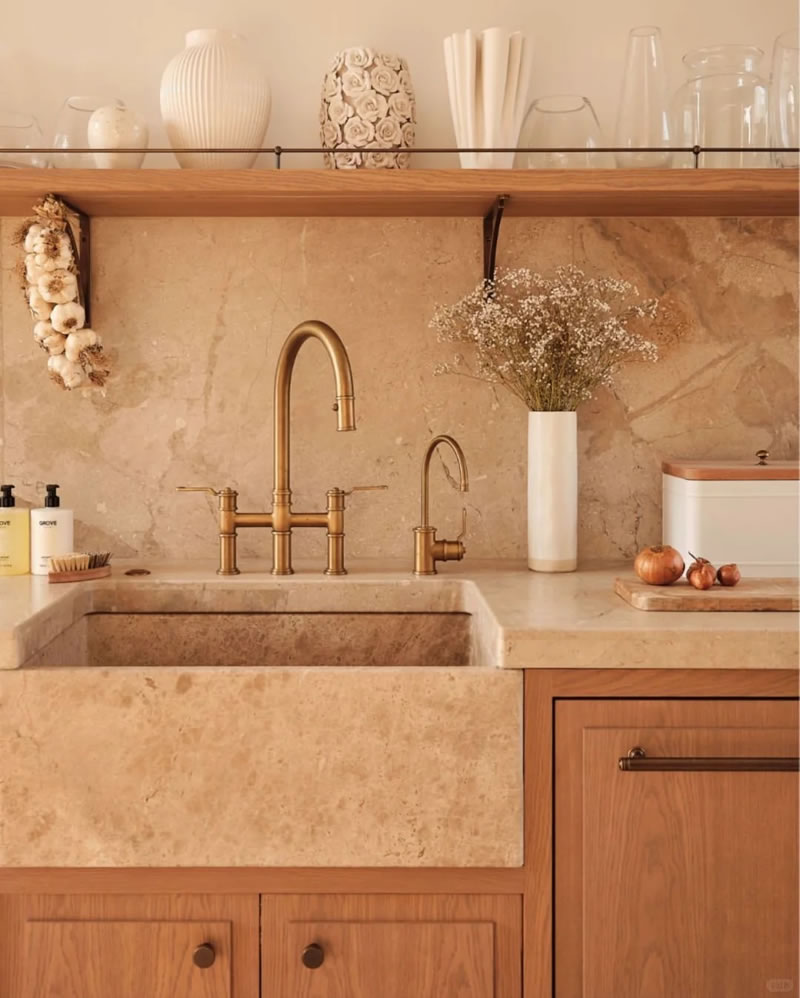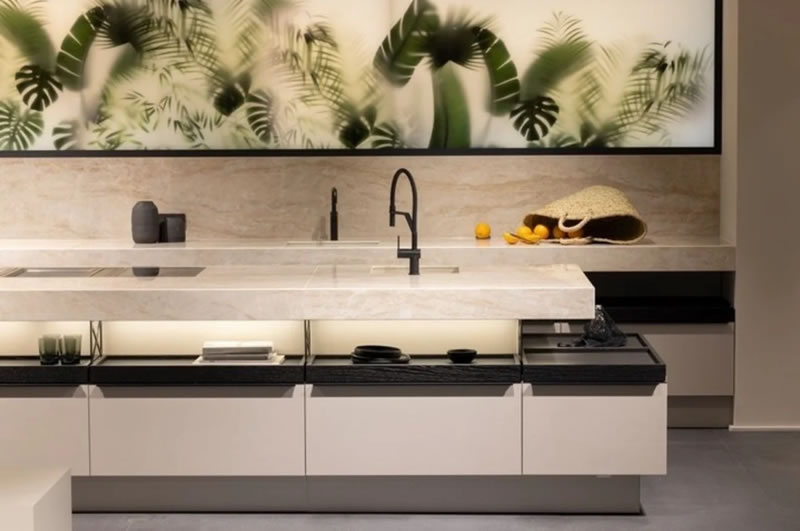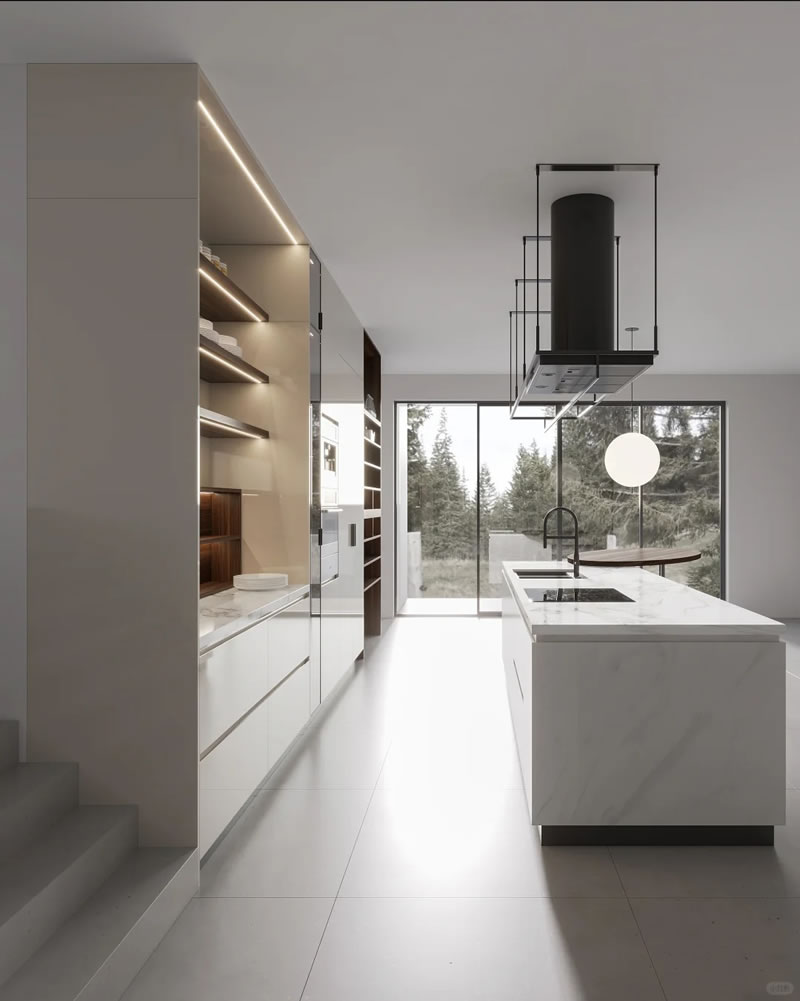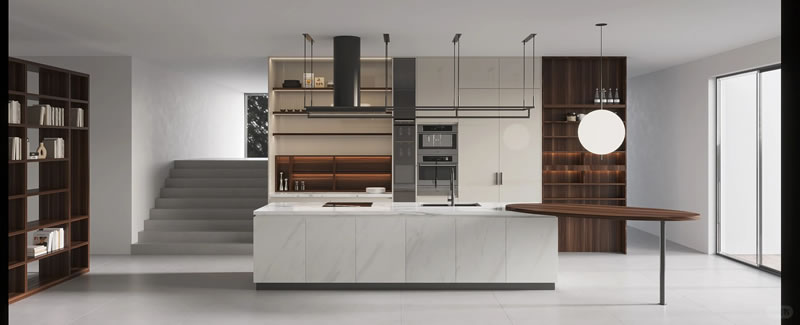Pros of Marble Countertops:
✔ Elegant Aesthetic – Natural veining and soft luster create a high-end, classic look.✔ Cool Surface – Ideal for baking (great for rolling out dough).
✔ Natural Material – Each slab is unique, adding character to your kitchen.
✔ Increases Home Value – A sought-after feature for upscale homes.
Cons of Marble Countertops:
✖ Porous & Stains Easily – Absorbs liquids (wine, oil, citrus, coffee) if not sealed properly.✖ Scratches & Etching – Acidic substances (lemon, vinegar) can dull the surface (etching).
✖ High Maintenance – Requires regular sealing (every 6–12 months).
✖ Expensive – Higher cost than quartz or granite.
Best Marble Types for Kitchens:
- Carrara – Light gray with subtle veining, budget-friendly.
- Calacatta – Bold veining, whiter background, premium price.
- Statuario – Bright white with dramatic gray veins.
- Crema Marfil – Warm beige tone, less common in kitchens.
How to Protect & Maintain Marble Countertops:
- Seal Regularly – Use a penetrating sealer to prevent stains.
- Clean Gently – Use pH-neutral cleaners (avoid vinegar or bleach).
- Wipe Spills Immediately – Especially acidic liquids.
- Use Cutting Boards – Prevent scratches and knife marks.
- Avoid Harsh Cleaners – Stick to mild soap and water.
Alternatives to Marble (If You Want the Look Without Maintenance):
- Quartz (Engineered Stone) – Resistant to stains, scratches, and etching.
- Porcelain Slabs – Durable, non-porous, and marble-like designs.
- Granite – More stain-resistant but still natural.
Final Verdict:
Marble is stunning but best for homeowners who don’t mind upkeep. If you love cooking with acidic ingredients or want low maintenance, consider quartz or porcelain instead.